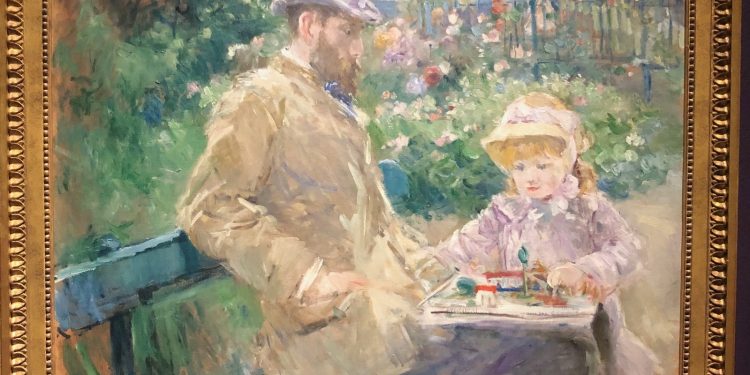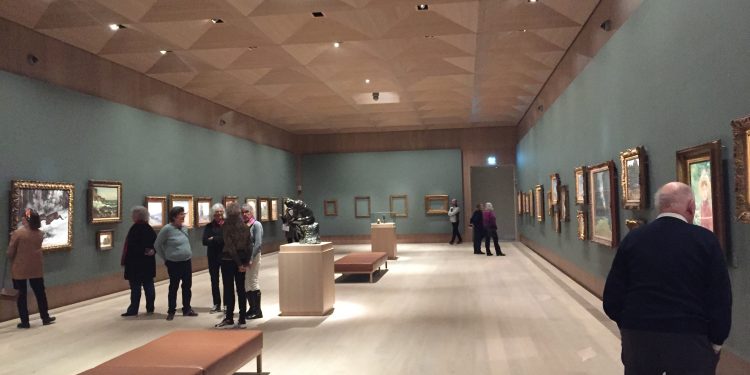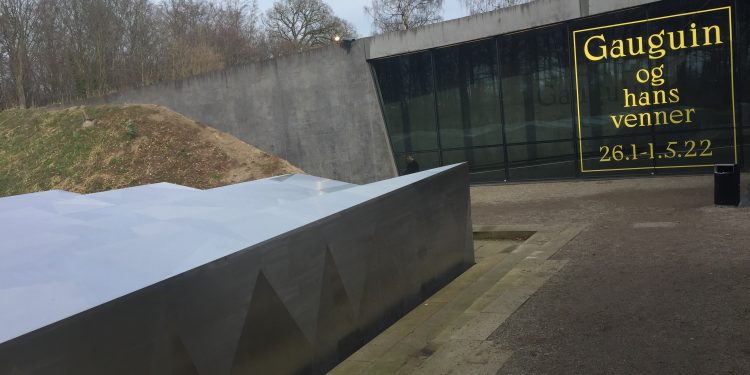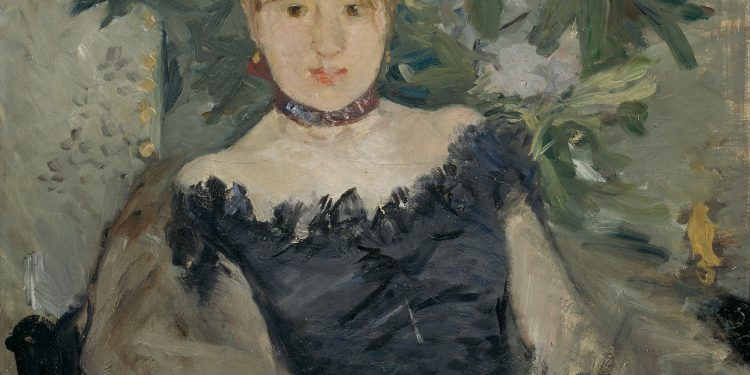Ordrupgaard and five overlooked talented female painters during the Impressionist period.
A gem of a museum with both interesting permanent and temporary exhibitions, a beautiful park and an excellent eatery. Female Impressionists only until 20 May.
The article continues below.
By Bente D. Knudsen Pictures: Ordrupgaard Museum, Private
If you have never been, than maybe this is a great occasion for going – but hurry as this temporary exhibition ends on 20 May.
The museum lies in a large mansion surrounded by an old park, or at least what is left of it, as the mansion has been extended a couple of times to enable more expositions, both of the museum’s permanent collection but also to make more room for the special exhibitions for which the museum is quite famous.
The title of this temporary exhibition may be appropriate, “Impressionism and its overlooked women”, however, it is a pity that they could not have found a more appealing title as the works displayed are absolutely magnificent.
The article continues below.
The paintings on show demonstrate how incredibly talented the women at the time were, fully at the same level as the most gifted and later famous male impressionists.
Sadly, there are also a few stories so common of that time, women dying because of childbirth or ill-health at a much too young age, or simply unable to reach their full potential due the lack of support of their husbands.
Interestingly one of the most successful ones, Berthe Morisot (France) was so due to the support of her husband – who was the brother of another talented (male) painter at the time. Berthe Morisot’s paintings are simply sublime both in colour, composition, and detail.
Other than the paintings by Berthe Morisot, you will see great works by Mary Cassatt (USA) as well as main works by lesser-known artists such as Eva Gonzalès, Marie Bracquemond (both France) and Marie Bashkirtseff (Russia-Ukraine), of which the latter two have never previously been shown in Denmark.
The exhibition portrays their struggle to be included in art history, focusing on the mark their works left on the contemporary art scene – in the independent impressionist exhibitions as well as the major censured exhibitions at the Paris Salon despite being largely overlooked in the great narrative on Impressionism and the emergence of modern art.
With this exhibition, featuring works from around the world, Ordrupgaard celebrates the 150th anniversary of the first of eight ground-breaking impressionist exhibitions that took place between 1874 and 1886 in Paris.
This exhibition, preparations for which have been underway for several years, also features several of the women who were immortalised in many of the most iconic impressionist paintings – from the black models in Édouard Manet and Edgar Degas’s pictures, to the many family members and friends chiefly portrayed in the works by the women artists.
It not only seeks to examine how these women are portrayed but also focuses on their identity, which opens new narratives and perspectives on pioneering impressionist art and its artists.
If you miss out on this opportunity than maybe you can catch in Ireland as after Ordrupgaard, the exhibition will be presented at the National Gallery of Ireland in Dublin.
Take the time to stroll also in the park or have a light meal at the café – book online to be sure to be seated as it is a popular place amongst visitors, take note that sadly the café closes for serving a full hour before the museum closes.
The article continues below.
The permanent collection features artists such as Monet, Renoir, and Gauguin. The museum also has a significant collection of Danish art concentrating on Hammershøi and his contemporaries.
In the park, you can enjoy works by international contemporary artists and visit Danish architect Finn Juhl’s world-famous house completely styled and furnished with his famous Danish design pieces.
With its large network, particularly within the world of French Impressionism, the museum’s speciality, Ordrupgaard Museum is able to attract many great pieces from museums and collectors across the world.
The article continues below.
The museum is extremely popular, we visited on a Thursday around 14:00, which proved a good time to come as many seemed to have headed for being there at the time of opening. Otherwise on weekdays going late on a Wednesday night could be a good plan as well.
Opening hours: Tuesday, Thursday, and Friday 13:00 to 17:00, Wednesday 13:00 to 21:00, Saturday and Sunday 11:00 to 17:00
Finn Juhl’s house only weekends 11:00 – 17:00
Location:
Ordrupgaard
Vilvordevej 110
2920 Charlottenlund
Support our magazine with a contribution of any size
We do not want to put up a pay-wall, so we need your support and if you find our content relevant and worthwhile, we would value any contribution, however big or small, as a token of your appreciation of our efforts.
How to support:
Transfer any contribution to our bank account at: Your Danish Life/ Danish Expat Media Aps
Danske Bank Account number: 3409 11405673
IBAN: DK68 3000 0011 4056 73
or MobilePay to 2144 1224
Message: Support





